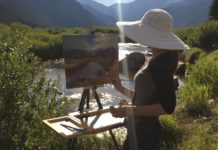
Painting on Location > Imbuing her work with the lessons of art history, this Maine oil painter takes advantage of amassed techniques and skills to stay in the moment and express her feelings about a scene.
Olena Babak did her research into painting long before she hit the plein air circuit. She attended the Academy of Classical Design in Southern Pines, North Carolina, after working as a gallery director for Antique Gallery in St. Augustine, Florida. “I did a lot of appraisals at the gallery,” she says. “I had to study a lot of art history and thus had a chance to learn about how the artists were trained and what made them successful. It all pointed to the conclusion that you have to gain skill before you can begin to express yourself. You have to have the tools and the means first.”
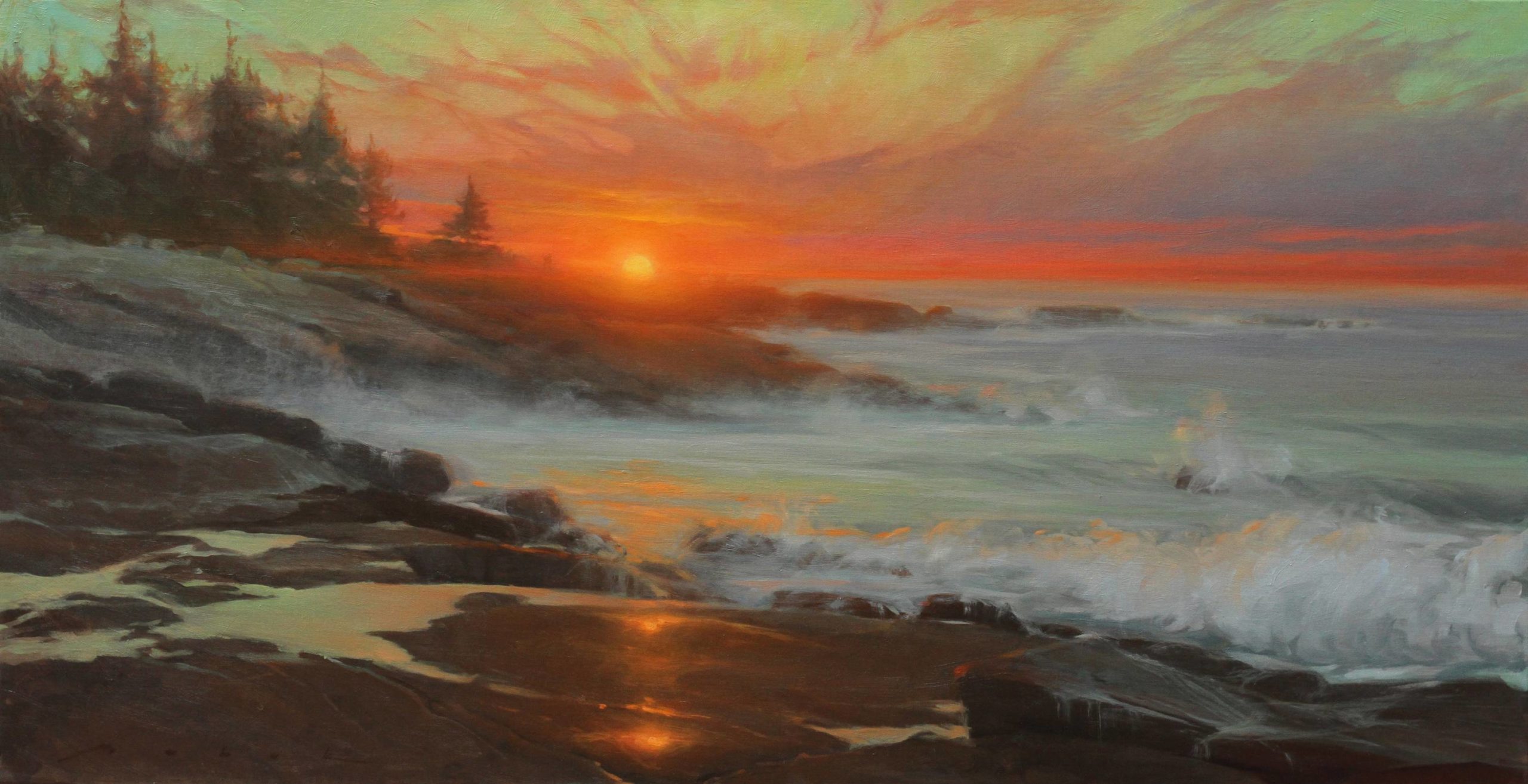
Plein air has its share of self-taught and slightly wooly painters who choose to sidestep formal training, and they do quite well creating strong work and gaining collectors. But Babak says there are more classically trained plein air painters in the mix than one might think. ‘Tm sure there are even more than I have personally met,” she says. “Sometimes when I meet someone, we find ourselves talking about the same people who influenced us.”
Babak stresses that the traditional training she appreciates is simply right for her, but in today’s art world, anything goes. “We live in a time that is incredibly unique to the whole of art history,” she asserts. “This is the only time when artists have been free to do and express themselves in any style they want. That has never happened before,” she says, referencing the rich patrons and religious figures (and their tastes and rules) who funded the creation of art through the ages. “Classicalism started with Napoleon, when he decided he was a Roman. Then Romanticism came about with the French Revolution. Visual art is no longer used to promote political or religious agendas. Back then, they told artists what to paint. Plus, we now have more media, such as film – not just visual art.”
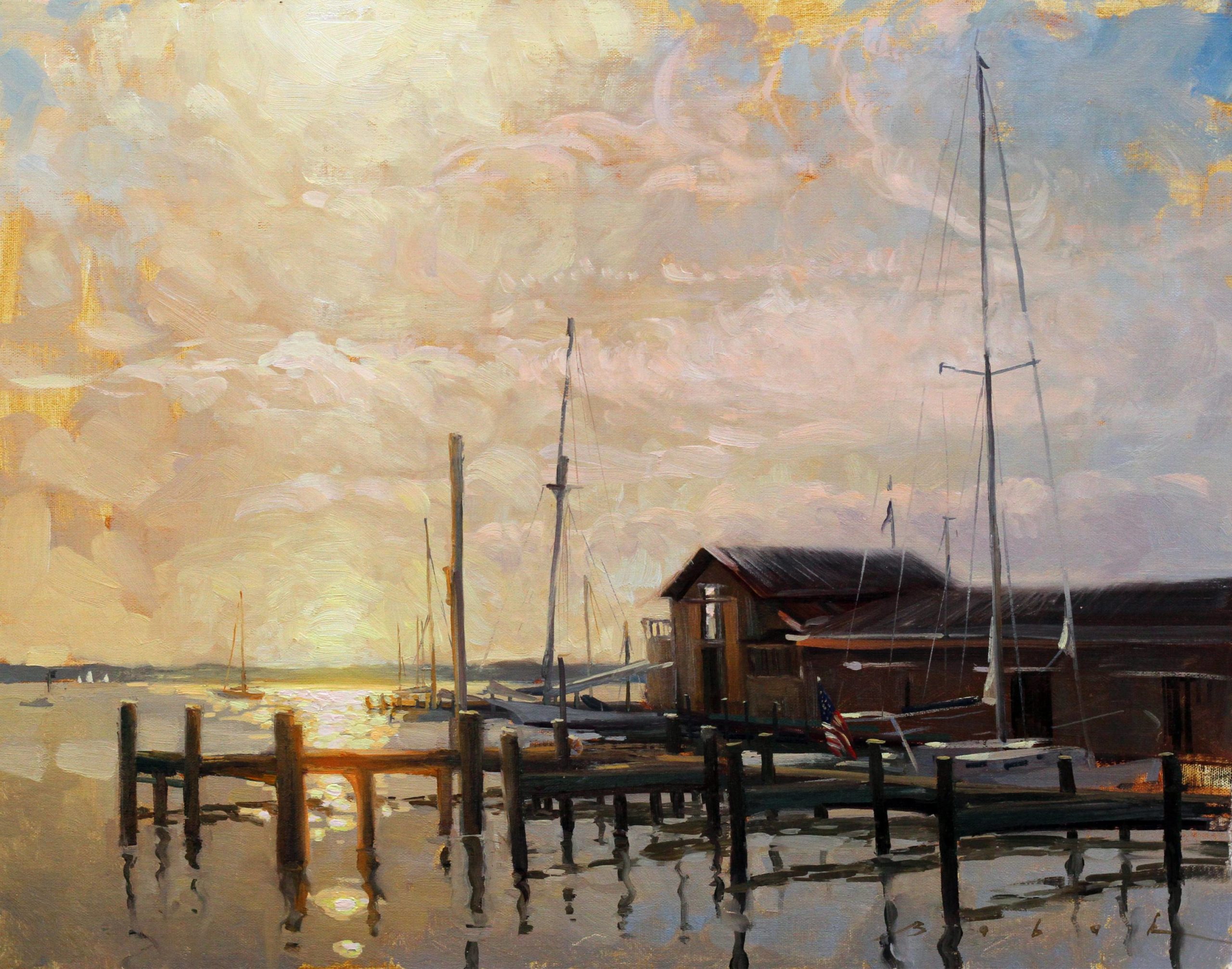
CONNECTING WITH A SUBJECT
So what does this research-oriented, assiduously studious, skilled art appraiser most enjoy painting? Sunrises.
“When I had just got out of school, I said, ‘What do I want to paint? Figures? Portraits?”‘ Babak recalls. “I called up friends to ask if I could stay with them in New York City, and then I went there and visited every gallery and museum that I was capable of absorbing in
10 days’ time. I realized that it doesn’t matter what you paint. It could be a paper clip, a sunrise, a child, a stick, a leaf. But if it is something that touches you, that will somehow go into the painting. I don’t know how it works, but it does.”
“With a sunrise or sunset, you don’t have time to think,” she continues. “You have to rely on your training and just paint. Nothing exists except that moment, and you just have to do it, counting on all of the skills you’ve acquired to come together with your unique creative expression.”
Sunsets and sunrises are not just beautiful scenes to Babak. She has an almost Proustian appreciation for them, as they remind her of her childhood.
“Sunrise is something very spiritual to me,” says the artist. “As are sunsets. There are constant changes, slight differences in colors and light, and that resonates in life for me. They really get to the highest emotion and highest color. Even as a child, I woke up at 4 a.m. to see the sunrise. I think childhood experience informs us. That experience of sunrises became a part of me. It has always made me happy. Some like trains, some like woods, I like sunrises. It takes me back to childhood times.”
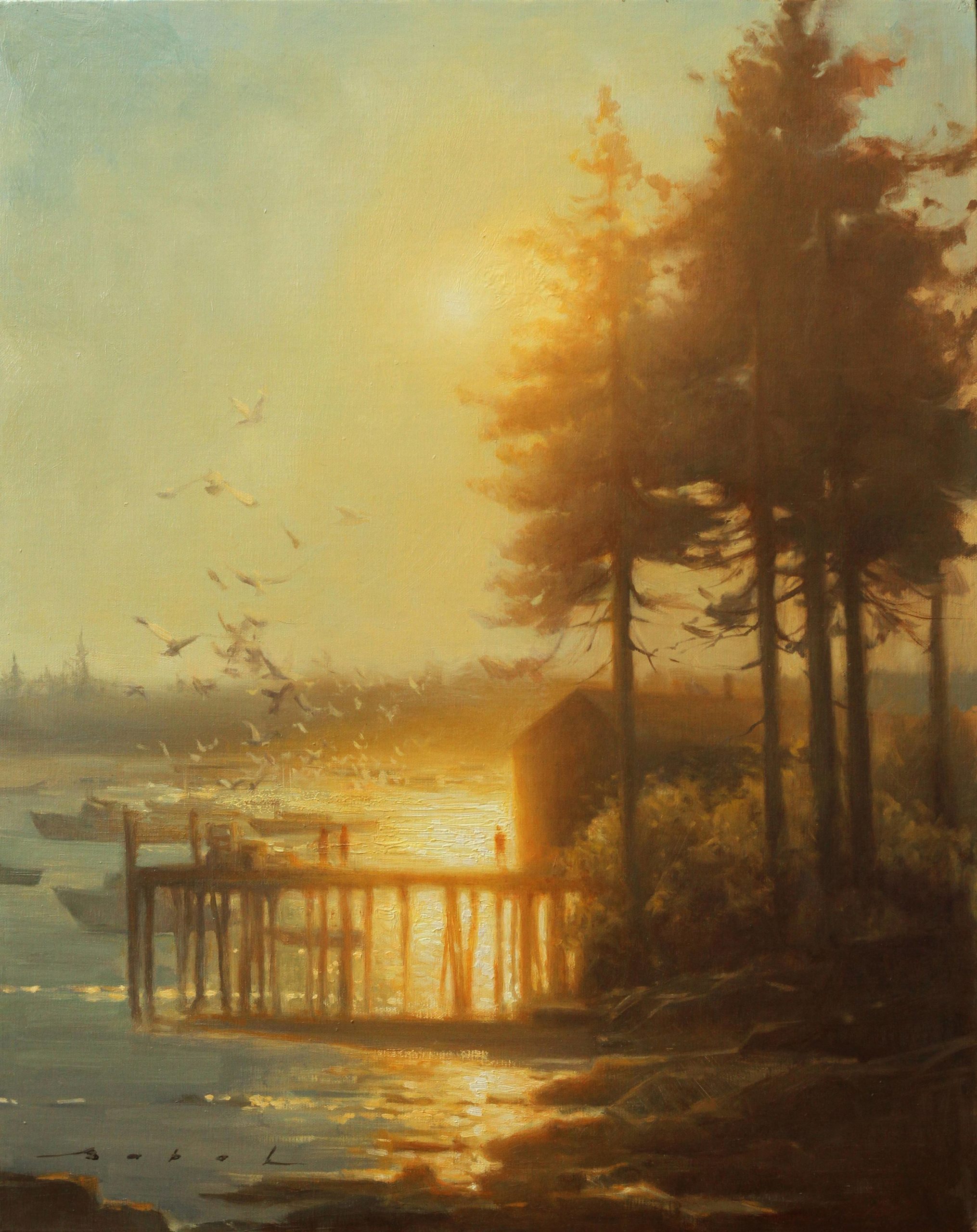
DEVELOPING A PLEIN AIR PROCESS
Babak acknowledges that her strong preference for sunrise and sunset may dissipate over time. But for now, they symbolize many things she likes about painting. “I love learning the logic of those fleeting moments,” she says, referencing the factors of the physical world that make a scene look the way it does. “Sometimes a plein air work stands on its own. I’ve seen this and watched it happen. It’s the present. It’s the sense of the place that you bring to someone, that idea, that visual feast that is in front of you.”
She is not a plein air purist, but plein air work is crucial to Babak’s process. She says she takes many photographs on location, but she can’t recall the last time she used a photo as a painting reference. For her, the on-location plein air sketch (along with her memory) is her primary source. “In the studio, plein air sketches have a special way of bringing me back to the moment and allowing me to hold that emotion over at least a few days of painting,” says Babak.
“The studio painting then develops in surprising ways. A sunrise study is sometimes a tiny sketch – maybe it took me 10 or 15 minutes. I just dash the colors in and hope it looks approximately the same as the scene. It’s a challenge. When the sun gets dose to the horizon, it goes down really, really fast. But then, the feeling, the emotion, is so moving, and the desire to capture that emotion and the feeling of that moment is so strong, that I know I have to paint it again in the studio.”
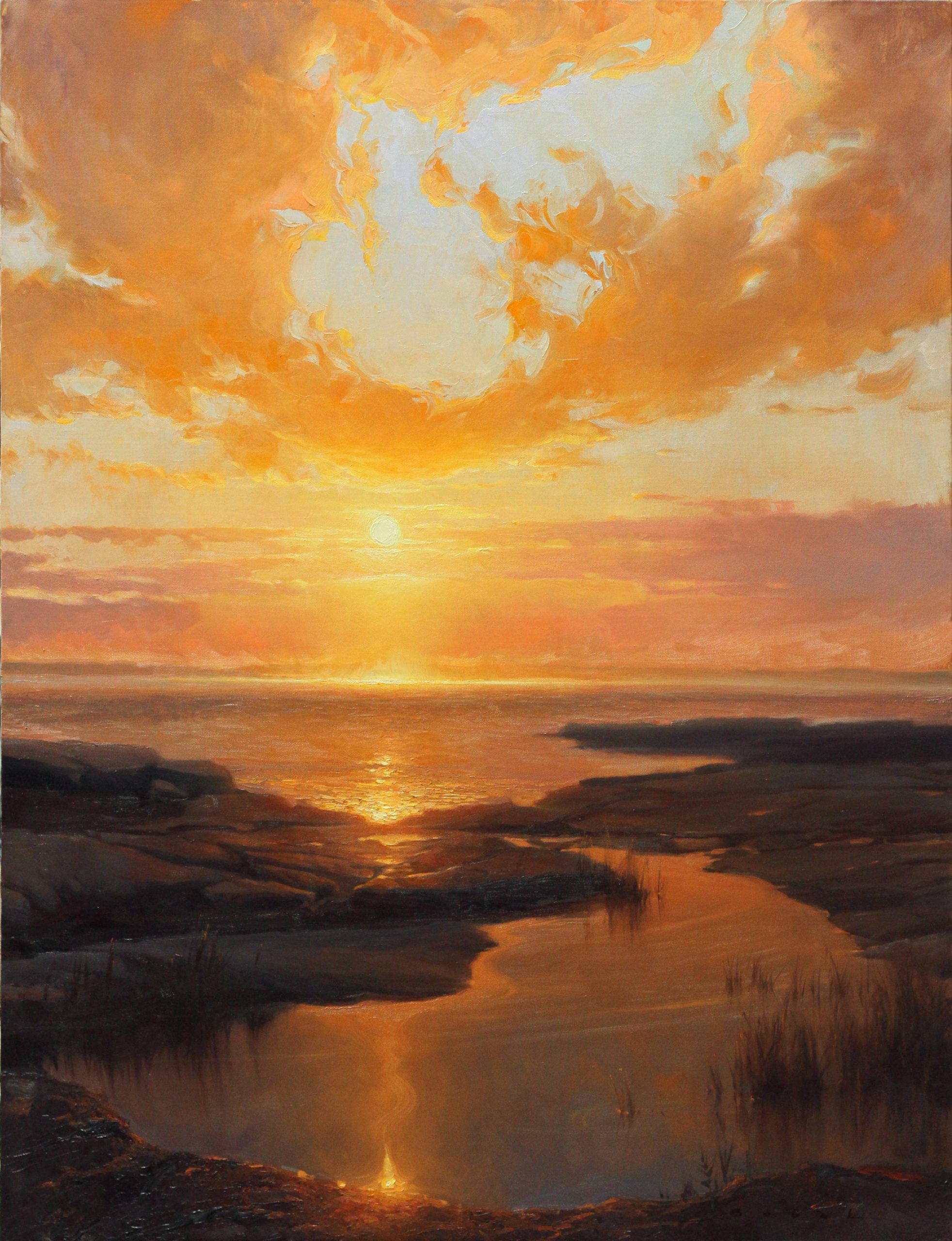
Pause Life and Paint for a Week! The Adirondack Mountains in Northern New York State is the place to be June 11-18, 2022. That’s where many old friends and new ones will be happy to see you during the 11th Annual Publisher’s Invitational!
FINDING FELLOWSHIP
Going back to Babak’s initial statement, training has allowed her to be expressive and in the moment. It’s a long way from copying the pedagogical Bargue plates and the cast drawings she executed at an atelier, or her work at the Academy of Classical Design, which did not involve landscapes.
“What started me on landscapes was the fellowship offered by Jacob Collins [founder of the Grand Central Academy of Art] in New York and New Hampshire,” she says. “The Hudson River Fellowship was all about the landscape. That sounded interesting, so I submitted my figurative work and got in. Most of the other fellowship artists had not done landscapes either. After those two or three weeks in New Hampshire, I put about five years into figuring out how to paint the landscape.”
If her Hudson River Fellowship hooked Babak on painting landscapes, it is the other definition of fellowship that hooked her on the plein air event circuit. “I get a chance to hang out with fellow artists at the events, and it’s so fun. We all go out and battle wind, sun, cold, and heat; we battle the elements of nature and come back with this beautiful camaraderie, the likes of which I have never experienced before. The whole nature part – that experience of the good and bad weather and all – really unites us in so much pleasure. Of course I want to win a prize, but when another artist wins, I’m happy for them. It’s a very good, very human experience.”
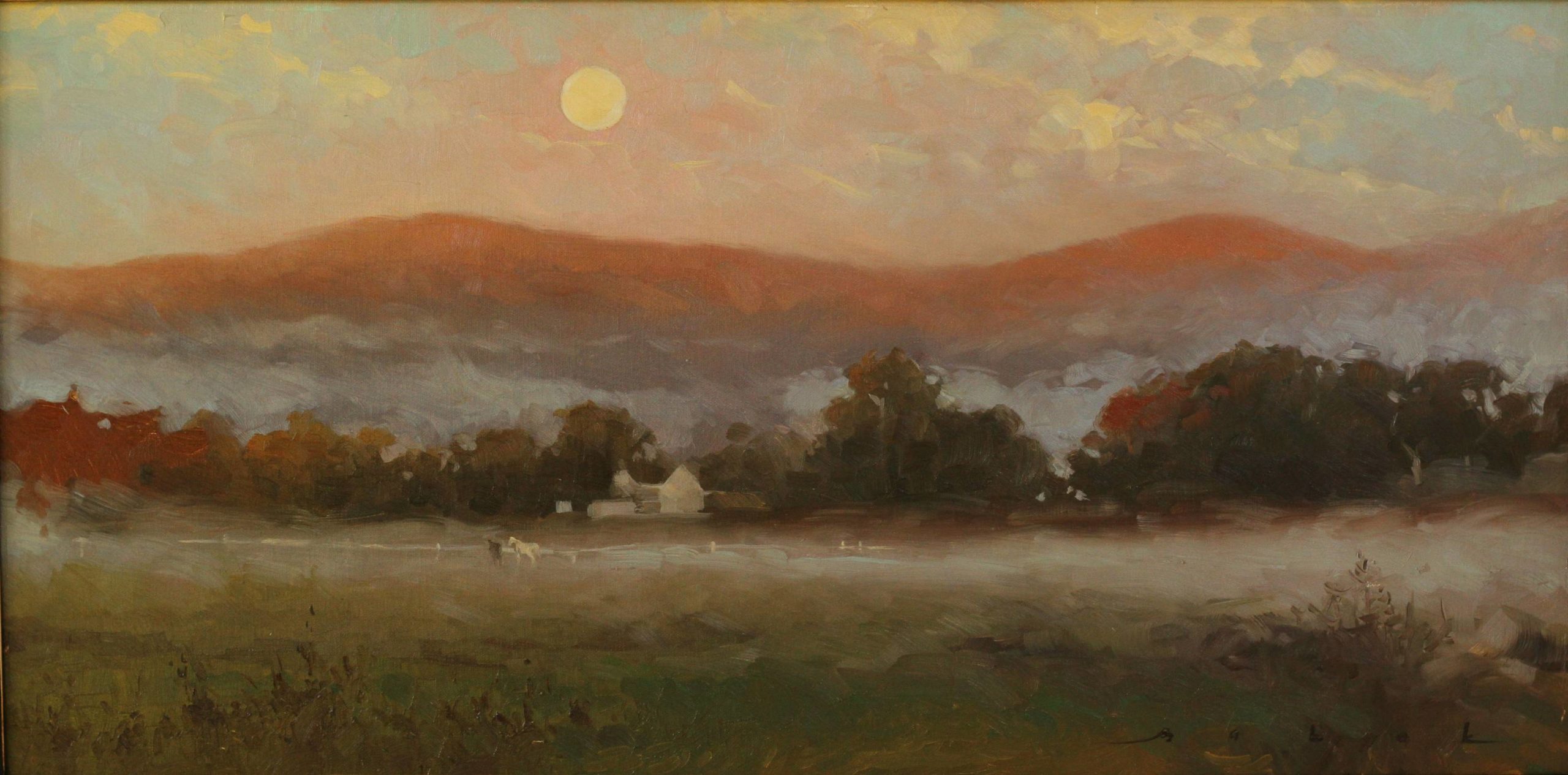
FOLLOWING YOUR HEART
Even though the world seems fixated on absolute dichotomies, on seeing things as either black or white, for many, the ability to hold conflicting ideas at the same time and to acknowledge that most issues are actually gray is a sure sign of intelligence. This would suggest a healthy intellect is behind the artwork of Olena Babak. Of all the concepts in opposition that may flow through her mind, the tension between expressiveness and technique seems to produce the most striking work.
Babak is an unabashed advocate for classical training and leveraging the wisdom present in the art and lives of artists from the past. “I love art history,” she says. “Some people don’t need that. They walk through the woods and want to express themselves when seeing the views. And I know a talented abstract artist who can paint realistically but chooses to express himself in abstraction. Skill appeals to me, but for some, expression is more important.
“The bottom line is: it’s solely what’s in your heart,” Babak continues. “Each of us has a different style. If you observe and gather into a mental box what you like, you eventually will become you. There is a tendency with rigorous study to become sort of a clone of whom you study, but if you follow your heart and do what you love – and appreciate everyone for who they are and choose what you like about their work – I think it makes you who you are. These are experiences, but they are not the final ones. One way, one experience, is not the only way it should or can be. I, for example, may be very different a year from now. How will my work develop? Who is going to come into my life and change that? Who will I be exposed to? What will travel bring to my work? Where will I go, and how will it impact me? Maybe I will go to China. Sargent, Whistler, and others were influenced by the so-called Orient, and I’ve been reading about that.”
Babak refers to herself as “studious,” but emotion and other intangible qualities feature prominently among her inspirations. “I have to be in love – with the moment, with the scene, with the paint – for a painting to be successful,” says the artist. “I think that is beauty. But how does one go about it? It’s a choice. Some find beauty in more mundane situations. That is their life experience. It comes from within, and eventually, if someone connects with that, it’s beautiful. I go for joy, because I have seen a lot of unfortunate times in my life and the lives of other people. I always want to lift something up, to show that something is beautiful even if it isn’t obviously so.
“But the finished painting is a byproduct,” Babak says. “It’s not why we do it. Our careers as artists are insane. I used to have a paycheck. Now I work way more hours than ever before. My friend Irina Rybakova says, ‘Being an artist is not a profession. It’s a diagnosis.’ It’s like a runner’s high, but it’s higher than that.”
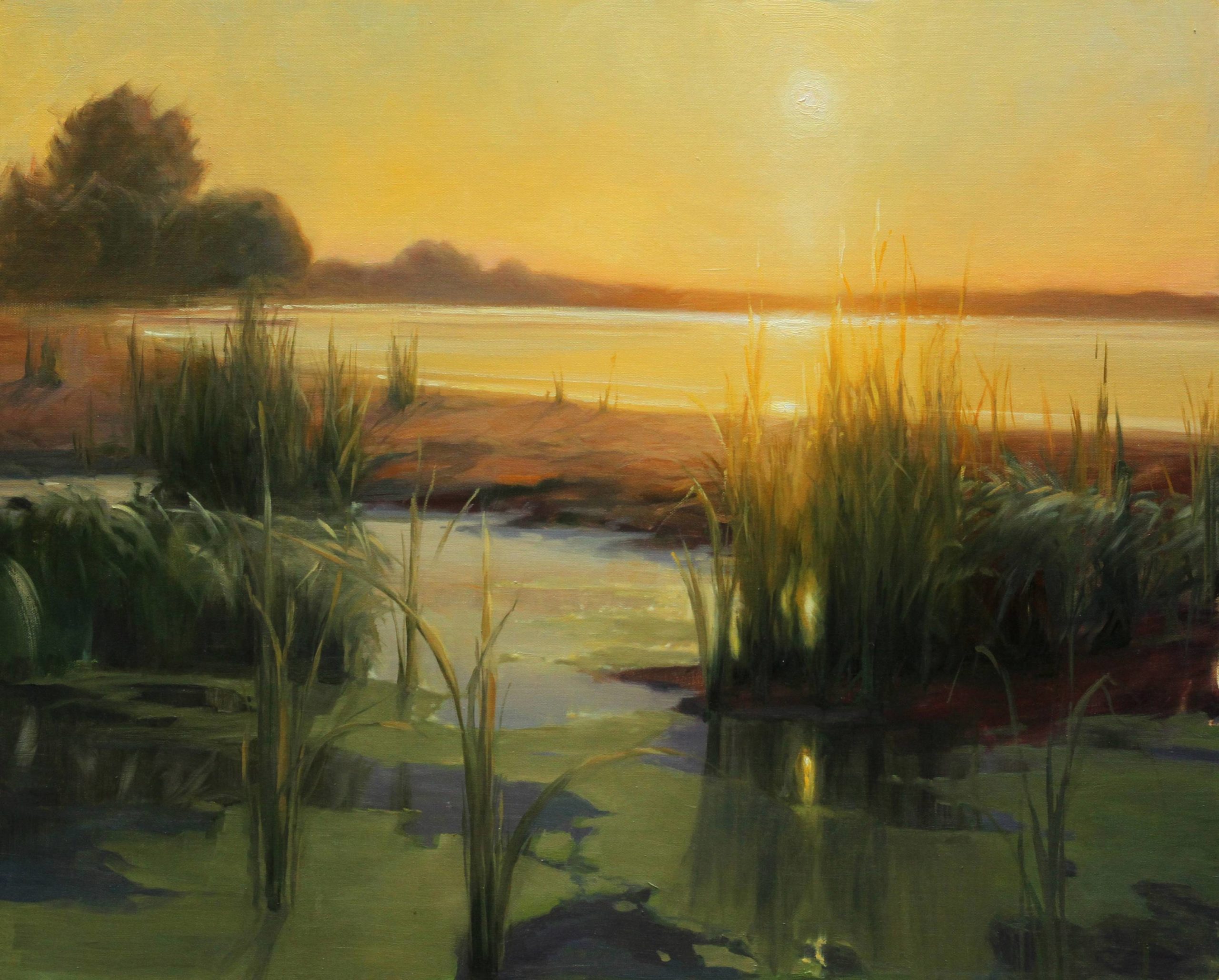
The painter says she feels like she straddles two worlds, or at least two art movements: Classicism and Impressionism. She gleefully pulls from the various movements she admires, taking design from the Italian school, color from the Russian Impressionists and the later French Impressionists, realism from French classicism, and the ideas of Romanticism.
“I want to see where it’s going to take me,” says Babak. “Where will I end up? Art is a journey, and you gotta love it. I’m definitely enjoying it. You have to love it because if you don’t, there is so much to it that does not meet the conventional standards of the accepted routine, and you will be challenged or questioned. Music, sports, science – for all of them, you have to love it. You will not be a great scientist or musician or athlete unless you truly invest all of your love into it.”
One likely path she’ll take is an excursion into the theme of the figure in the landscape. Babak has been studying Sargent’s approach to the subject, and she plans on exploring it herself this summer. “I love portraiture; it’s something I’ve been doing for a while,” she says. “But I didn’t abandon portraits so much as I focused more on landscapes. My experiences with landscape and figurative painting are both coming along, and I am ready to put them together.”
Count on it being a thoughtful endeavor.
Connect with Olena Babek at olenababak.com.
Related Article: When Painting on Location, What’s the Big Idea?
Visit EricRhoads.com to find out all the amazing opportunities for artists through Streamline Publishing, including:
– Online art conferences such as Plein Air Live
– New video workshops for artists
– Incredible art retreats
– Educational and fun art conventions, and much more.
> Subscribe to Plein Air Today, a free newsletter for artists
> Subscribe to PleinAir Magazine so you never miss an issue


